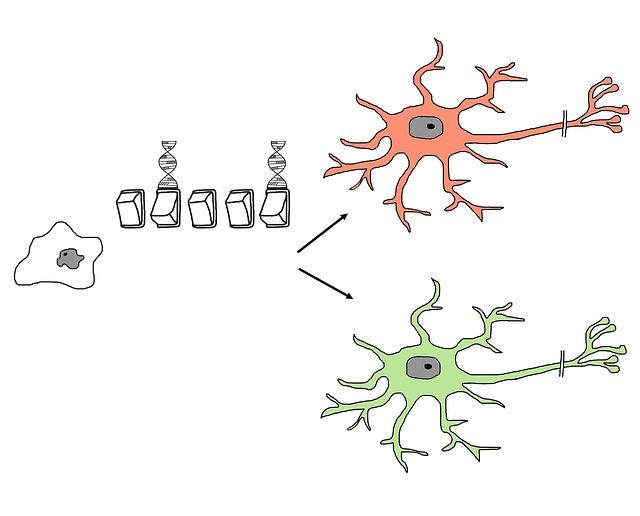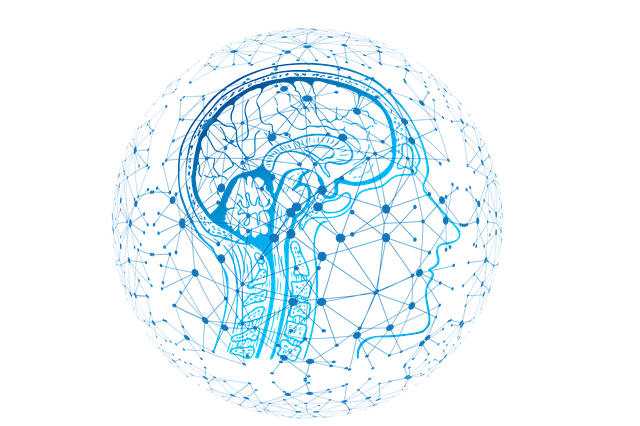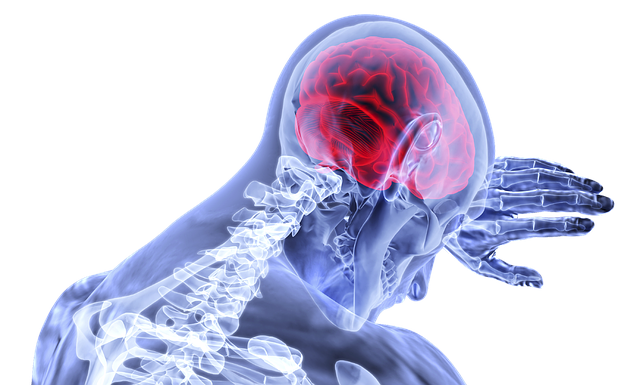Can You Regenerate Myelin In Multiple Sclerosis Patients? Here’s The Truth

If you’re living with MS and you’re wondering if it’s possible to regenerate myelin in multiple sclerosis patients then you’re not alone.
Multiple sclerosis is a debilitating illness that just seems to progress overtime. Your neurologist may have told you that you can slow down the progression of the disease using immune modulating medication but the reversal of the damage that has been done is impossible.

You might have been told that you’ll require a cane at some point, which will then progress to you requiring a walker and inevitably a wheelchair. Well I’m here to tell you that does NOT have to be the case.
In this article I’m going to look at the FACTS and I’m going to be referencing some studies as well to find out if regenerating the myelin sheath is possible in patients suffering from multiple sclerosis.
However, prior to doing that we need to understand what myelin actually is and how it becomes damaged in MS.
What is Multiple Sclerosis?
Multiple sclerosis (MS) is an autoimmune disease in which the body attacks the nerves of the brain and spinal cord. As a result the protective layer of the nerves called myelin is damaged.
As a result, the damaged nerves develop plaques in place of the previous healthy myelin. These damaged nerves with plaque are called sclerosed nerves; hence the name multiple sclerosis.
People from all over the world can be effected with this debilitating illness, however the highest rates are found in Canada with 1 in 385 people being diagnosed.

Signs & Symptoms
The first signs of multiple sclerosis usually appear in a person’s early 40’s but can vary broadly. Signs can first appear as early as a person’s late teens or early 20’s or as late as a person’s 50’s or 60’s. However those cases are not as common.
Classically the first symptoms of MS is something called the Lhermitte’s sign. This is a feeling of an electric shock going down your arms or legs when the head is bent down towards the chest.
Some neurologists claim that the first early sign of multiple sclerosis that is often not recognized is depression/anxiety. It’s believed that these subtle signs are due to inflammatory processes starting in the CNS.
This is commonly followed by foot drop in either one or both feet resulting in difficulty walking. The following signs and symptoms can follow in varying degrees of severity:
- Spasticity
- Numbness and tingling (paresthesia’s)
- Intolerance to hot and humid conditions (Uhthoff’s phenomenon)
- Fatigue
- Sleep problems
- Pain
- Decreased vision (classically in 1 eye)
- Dizziness
- Balance issues
The gold standard of diagnosing multiple sclerosis is by MRI of the head and spine with contrast. The MRI will show the areas of the brain and spinal cord that has been demyelinated.
Types of Multiple Sclerosis
Multiple sclerosis can be broken down into various different types. They are as follows:
Relapsing Remitting Multiple Sclerosis (RRMS)
Approximately 80-85% of patients diagnosed with multiple sclerosis will be diagnosed with RRMS at first. This is when the patient has flare ups where their symptoms get much worse for a period of time. Then there is a gradual recovery but the patient doesn’t return to their baseline.
This stage can potentially last for decades before moving onto the next phase of the disease.
Secondary Progressive Multiple Sclerosis (SPMS)
Most patients with RRMS eventually go on to SPMS. In this phase patients do not have relapses, but have a slow progression of the disease instead.

This is usually the phase where neurologists tell patients that regeneration of myelin is not possible. But we will soon discuss the facts.
Primary Progressive Multiple Sclerosis (PPMS)
A small percentage of MS patients get diagnosed with PPMS. This is a type of multiple sclerosis where there is a slow progression of symptoms from the start with or without relapses that don’t return back to baseline.
Rapidly Progressive Multiple Sclerosis (RPMS)
This is a very rare form of disease that is just what its name makes it out to be. The disability in RPMS progresses very quickly from the point of onset. A patient can go from walking to being wheelchair bound within a few years time.
What Is Myelin?
Myelin is just the fatty outer layer of a nerve cell. When you want to perform an action, your brain sends a signal down the nerves of the spine to the muscle. The muscles then contract due to this signal.
The myelin makes it possible for this signal to be transmitted quickly and smoothly. If the myelin is damaged like it is in multiple sclerosis then signals can’t be transmitted effectively and therefore you get symptoms such as tight, spastic muscles and fatigue.
In multiple sclerosis, the myelin is damaged faster than the body’s innate ability to repair it. Or the central nervous system is unable to regenerate the myelin that has been damaged.
Is It Possible To Regenerate Myelin in Multiple Sclerosis Patients?
Despite what you may have been told by some allopathic physicians, the answer is that regeneration of myelin IS possible.
Not only is it possible but there have been many documented cases of patients repairing their lesions and recovering from their disability!
Unlike previously, actually reversing multiple sclerosis is possible.
Before sharing the ways in which this possible, we need to discuss what’s necessary to repair the myelin that has been damaged. Two things need to happen for this to occur:
1: Reducing Inflammation
The root of many chronic autoimmune conditions is persistent inflammation. If the central nervous system is constantly inflamed then damage will continue to happen.
Related: Best (And Worst) Jobs For People With Multiple Sclerosis
If regeneration of myelin in multiple sclerosis patients is to happen then the ongoing damage needs to be stopped first.
2: Stimulate The Cells in The CNS to Produce Myelin
After the ongoing inflammation and damage has been stopped, the next step would be to produce myelin and remyelinate damaged neurons (nerve cells).

The repair mechanisms include reduction of inflammation, providing cells with factors needed to produce myelin and to stimulate the cells of the CNS to produce myelin at a rate faster than it’s destroyed.
How to Repair Myelin In Multiple Sclerosis
The first step if you want to regenerate myelin and heal from this debilitating disease is to believe you can. There have been people who have been wheelchair bound by secondary progressive multiple sclerosis who have fully recovered. If they can do it, so can you!
Perhaps the most famous person is Dr. Terry Wahl’s, who went from wheelchair bound to completely healing herself through diet. She went on to publish her diet and created The Wahl’s Protocol. A few of the things mentioned in this list is things that Dr. Wahl’s has done herself.
I have added additional things to this list that may not have been mentioned in her book. So without further delay, here’s number 1.
Disclaimer: Please make sure you continue to take any medication your neurologist has prescribed you. These things are not a complete replacement for your medications. I encourage you to discuss these options with your neurologist as well.
#1: Eliminate Dairy & Gluten
It may sound simple, but this is number one for a reason. Gluten and dairy are two of the most inflammatory things you can put in your body. This is especially true for people with autoimmune disease.
Terry Wahl’s had completely eliminated gluten and dairy from her diet and had noticed a difference in energy and reduction of brain fog almost immediately.
Leaky Gut
To understand why eliminating gluten and dairy are so important, we are going to quickly take a look at the leaky gut theory.
There is evidence to support that the the central nervous system and the gut are connected. Complex impulses are sent from the gut to the CNS and the CNS to the gut.
The only thing that’s stopping the bacteria and other microbiota from travelling to the CNS via these connections is the gut lining. If the lining gets disrupted then bacteria and other substances can travel to the brain and spinal cord.

This in turn causes the immune cells in the CNS to attack the bacteria, hence causing tonnes of inflammation.
Gluten and dairy are thought to be a few of the things that have the greatest impact on the integrity of the gut lining. Hence, when you eliminate gluten and dairy, your gut lining has a chance to heal and your body can start repairing itself.
The first thing to do when trying to regenerate myelin in multiple sclerosis patients is to curb inflammation by eating a diet that’s rich in fruits, vegetables instead of gluten and dairy.
#2: High Dose Biotin
Biotin has been shown to promote axonal remyelination through reducing hypoxia of axons through increased energy production. In addition, biotin also enhances myelin production. High dose biotin can definitely play a role in regenerating myelin in multiple sclerosis patients.
When I say high dose biotin, I mean really high dose biotin. There was a study done with 300mg of biotin per day in patients with secondary progressive multiple sclerosis.
Patients with secondary progressive multiple sclerosis were given 100mg of biotin 3 times per day and were followed up at 9 months and confirmed at 12 months. The primary endpoints were to see if patients could decrease disability scores by >1 point (>0.5 for EDSS 6-7) or a 25% decrease in 25 foot walk time.
At the end of the 12 months, 12.6% of patients in the treatment group met those endpoints vs. NONE in the placebo group (p=0.005).
There are many patients with multiple sclerosis that have experienced significant clinical improvements with the addition of high dose biotin.
It’s best to space out the 300mg’s into 3 doses of 100mg per day. Make sure you take your high dose biotin without food because just like the other B vitamins, biotin (vitamin B7) is water soluble, NOT fat soluble.
#3: Lions Mane
Lion’s Mane is a type of mushroom that is often used in Chinese herbal medicine. The name comes from the resemblance the mushroom has with the mane of a lion.

If you had to pick one herb to regenerate myelin in multiple sclerosis, it would have to be Lion’s Mane (Hericium erinaceus). It does this through increasing the production of nerve growth factor (NGF).
Studies have shown that when damaged nerves are exposed to Hericium erinaceus (in vitro), they exhibit greater remyelination than the control groups.
More studies need to be conducted in humans but the results so far are very promising and there have been great anecdotal results reported by MS patients.
#4: Vitamin K2 and Vitamin D
Who could’ve thought that vitamin’s derived from sunlight (vitamin D) and green veggies could have the ability to help regenerate myelin in multiple sclerosis patients.
In a study by Lasemi et al. the levels of vitamin K2 were measured in 45 patients with MS and 29 controls without MS. They found that the levels of vitamin K2 were significantly lower in patients with multiple sclerosis compared to the controls (235 ± 100 ng/ml vs. 812 ± 154 ng/ml, respectively).
With regards to myelin repair, a study by Popescu et al. demonstrated significantly increased myelin repair in rats that were given vitamin K2 when compared the controls.
When it comes to vitamin D and multiple sclerosis, there is a clear correlation between geographical location and incidence of cases. The greatest incidence of multiple sclerosis is found north of the equator.
The results to a study performed by J.F Kurtzke found that there was a decreasing gradient in the incidence of MS geographically going north to south.
The variance in rates ranged from 350/100,000 to 0/100,000. The degree of variance was too great to be explained by genetics alone. The degree of exposure to sunlight and vitamin D levels clearly have an impact on the chances of developing MS.

The fix is simple, vitamin K2 and vitamin D supplements are relatively inexpensive. Just make sure you take them with food, as both vitamin K and D are fat soluble.
#5: Pregnenolone
Pregnenolone is a neurosteroid (a steroid hormone found in the brain and spinal cord) that is found to be reduced in the brains of patients with multiple sclerosis.
Pregnenolone also acts as a master hormone which is used to manufacture many other hormones in the body.
A study by Keonig. et al. revealed that when either progesterone or pregnenolone was injected near demyelinated nerves, the extent of myelin repair was greatly enhanced! This experiment was conducted in mice and further research is currently being conducted in humans.
The theory is that pregnenolone actually helps the oligodendrocytes in the brain (the cells that form myelin in the CNS) function better.
The good new is that pregnenolone can easily be supplemented and is very safe to do so in low amounts. The ideal way to do this is to get your blood levels checked and supplement with 25-50mg per day if you’re low. Then re-check blood levels in about 3 months.
Make sure you take the pregnenolone in the morning on an empty stomach.
Conclusion
Myelin repair isn’t an overnight task. Your nerves regenerate and repair much slower than other cells like skin, bone or hair.
But the most important thing to remember is that it’s possible to regenerate myelin in multiple sclerosis! It just takes smart choices and consistency.
In order to maximize your chances of repairing the damage done to your body, the most important thing is to manage stress. The body can’t repair itself if it’s under constant stress.
The stress hormone cortisol is very inflammatory and you should do your best to keep it at bay. Do yoga, get some some, read a nice book and just de-stress.
You’ll be on your way to regenerating that myelin in no time!






